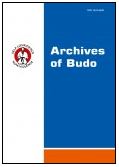2021, Volume 17
Historical and pedagogical experience in national khapsagai wrestling and its implementation in modern physical education practice
Peijun Huang 1, Elena Cherkashina2, Ilia Cherkashin3, Ivan Druzianov 2, Artur Kruszewski4, Chengcheng Cai5, Marek Kruszewski4, Olga Fedotova6
1Moscow State Academy of Physical Culture in Moscow Region, Malakhovka, Russia
2North-Eastern Federal University in Yakutsk, Yakutsk, Russia
3North-Eastern Federal University in Yakutsk | Moscow State University of Sport and Tourism, Moscow | Arctic State Agrotechnological University in Yakutsk | Churapcha State Institute of physical culture and sports in Churapcha, Churapcha, Russia
4Department of Individual Sports , Jozef Pilsudski Uniwersity of Physical Education in Warsaw, Warsaw, Poland
5Moscow State Academy of Physical Culture in Moscow Region, Malakhovka, Russia | College of Profession Tennis, Wuhan City Polytechnic, Wuhan, China
6Don State Technical University in Rostov on Don, Rostov on Don | Southern Federal University in Rostov on Don, Rostov on Don, Russia
Author for correspondence: Artur Kruszewski; Department of Individual Sports , Jozef Pilsudski Uniwersity of Physical Education in Warsaw, Warsaw, Poland; email: Artur.kruszewski@awf.edu.pl
Full text
Abstract
National sports are an integral part of ethnic culture, which must not only be preserved but also, through the prism of modern science and practice, transformed into a modern socio-cultural environment, taking into account regional and national factors. The coldest region in the Northern hemisphere is the Republic of Sakha, which totally lies within permafrost zone. Extreme climatic conditions, historical events filled with wars, as well as traditions and customs of the Sakha people, placed special demands on men, as manifested in their desire to be agile, strong, fast, and resilient. It was the national khapsagai wrestling that ensured normal body activity in everyday life, hunting, and work. Khapsagai is a humane sport, there is no striking technique, no pain moves, no fuss. But at the same time, it is more about agility and requires technical and tactical actions without injuring the opponent. All this makes it possible to engage in khapsagai wrestling from childhood and contributes to sporting longevity. Khapsagai wrestling as a national sport has gained international recognition after its inclusion in the United World Wrestling (UWW) – Committee of Associated Styles.
Key words: combat sports, ethno pedagogy, hand-to-hand combat, martial arts, psycho emotional




